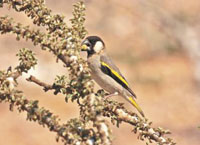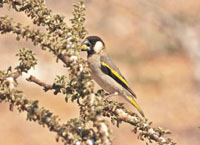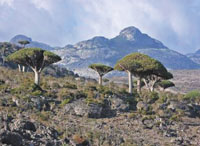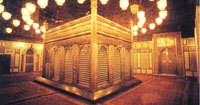
Nominated World Heritage Site facing development threats [Archives:2008/1129/Last Page]
February 14 2008
 |
 |
The uniqueness of Socotra's avifauna is also impressive with at least eight endemic species. Additionally, 12 species occur that are classified as threatened and 24 occur in internationally significant numbers. The islands' population of the Endangered Egyptian Vulture Neophron percnopterus is in excess of 1,000 individuals, probably the highest concentration in the world.
The archipelago is also of international importance for its breeding seabirds. Ten species breed, two species of which (Jouanin's Petrel Bulweria fallax and Socotra Cormorant Phalacrocorax nigrogularis) are classified as globally threatened. All this makes these islands globally important for birds.
In view of this amazing richness in biodiversity Socotra has been nominated for the prestigious accolade of a World Heritage Site.
“We are so proud that our wonderful island of Socotra has been nominated as a World Heritage Site because of its unique biodiversity”, says Abdul-Rahman Al-Eryani, Yemen's Minister of Water and Environment. The Minister was also excited by Socotra's Detwah Lagoon becoming Yemen's first Ramsar site following the country's recent accession to the Ramsar Convention.
However, sensitive and ecologically important areas of Socotra are currently threatened by uncontrolled development, in particular the proposal to construct a new road system. The scale and construction of many new roads is inappropriate, given the sensitive nature of the Socotran ecosystem.
If these roads are built they will seriously impact on the island's wildlife and especially its unique plants and birds. Nineteen bird species of conservation concern could be affected because of the likely destruction of their breeding habitat and nest sites. These include Jouanin's Petrel, Island Cisticola Cisticola haesitatus, Socotra Warbler Incana incana, Socotra Starling Onychognathus frater, Socotra Sunbird Nectarinia balfouri, Golden-winged Grosbeak Rhynchostruthus socotranus and Socotra Bunting Emberiza socotrana.
“It is essential that this proposed road building programme is examined carefully by the Yemen Government before it seriously affects Socotra's fragile and internationally renowned environment”, says Richard Porter, one of the authors of a report on the roads recently sent to the President of Yemen by BirdLife International and the Royal Botanic Garden Edinburgh.
“The people of Socotra certainly need some essential roads. However they also need to preserve their unique enviroment, as it is certainly their most important economic asset. A sound balance between development and biodiversity conservation is therefore critical for the appropriate development of the island”, said Malek Abdulaziz, Programme Manager for the Socotra Conservation and Development Programme.
BirdLife is calling on the government of Yemen to build only essential roads that are beneficial for local communiteies, in a way that is sensitive to the environment. In addition, the cost saving would be enormous, allowing much needed small-scale local development, and there would not be the serious impact on wildlife and the island's increasingly important eco-tourism.
“It would be a global tragedy if this programme were to affect Socotra's chances of becoming a World Heritage Site”, says Porter.
Source: www.birdlife.org
——
[archive-e:1129-v:15-y:2008-d:2008-02-14-p:lastpage]


